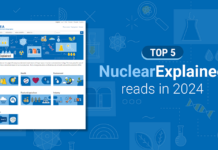Streamline Your Kubernetes Networking with DigitalOcean’s VPC-Native Clusters
DigitalOcean has recently rolled out an exciting update for users looking to enhance their Kubernetes networking capabilities. The introduction of VPC-native DigitalOcean Kubernetes (DOKS) clusters is now available, aiming to improve networking flexibility and scalability for various workloads. This update provides seamless integration between DOKS clusters and Virtual Private Cloud (VPC) resources, marking a significant step forward for users seeking efficient and effective network management.
Understanding VPC-Native DOKS Clusters
The concept of VPC-native DOKS clusters revolves around enabling native routing between Kubernetes clusters and VPC resources. Essentially, this means that your DOKS clusters can function as an integral part of your existing VPC network architecture. This seamless integration allows for improved connectivity and performance, making your infrastructure operations smoother and more efficient.
With the introduction of VPC-native networking, users can expect several key benefits:
Improved Integration
The integration with VPC resources allows users to easily connect their Kubernetes clusters with other resources within their VPC, such as databases and object storage. This connectivity ensures that your workloads can efficiently communicate with essential components of your infrastructure.
Enhanced Flexibility
VPC-native networking offers users the ability to customize their networking configurations according to the specific requirements of their applications. This flexibility is crucial for adapting to the unique demands of different workloads and ensuring optimal performance.
Simplified Operations
With a unified network environment, managing both infrastructure and applications becomes significantly simpler. The streamlined operations provided by VPC-native clusters reduce the complexity involved in maintaining separate networking setups, allowing for more efficient management.
Key Features of VPC-Native DOKS Clusters
This update ensures that any new DOKS cluster created is, by default, a VPC-native cluster. This advancement guarantees secure and isolated networking for your workloads, with no additional setup required from the user’s end. For those with advanced networking needs, DOKS offers customization options, allowing users to tailor pod and service networks to align with specific application requirements or infrastructure policies.
It’s important to note that the VPC-native capability is exclusive to new clusters. Existing clusters will continue to operate using traditional networking models, ensuring uninterrupted operations for current workloads. Unfortunately, there is no direct migration path from existing clusters to VPC-native. Therefore, the recommended approach is to create a new VPC-native cluster and migrate your workloads accordingly.
Enhanced Networking Features
Alongside the introduction of VPC-native DOKS clusters, DigitalOcean has also unveiled a range of additional features to further improve networking capabilities for Kubernetes users:
VPC Peering
This feature enables private connectivity between your DigitalOcean VPCs, simplifying cross-VPC communications. By allowing different VPCs to communicate privately, VPC Peering enhances the integration of various parts of your infrastructure.
Global Load Balancer
The Global Load Balancer efficiently distributes traffic across multiple regions, supporting high availability and optimized performance. This feature is crucial for applications that require consistent performance and uptime across different geographical locations.
Internal Load Balancer
Designed to facilitate secure, internal traffic routing within your VPC, the Internal Load Balancer ensures that sensitive data remains protected while being efficiently routed within your network.
Together, these features provide a comprehensive toolkit for building robust, scalable, and secure Kubernetes environments. The combination of VPC-native clusters and additional networking enhancements empowers users to create efficient and reliable infrastructures.
Early Adoption and User Feedback
During the early availability phase, many users took advantage of VPC-native DOKS clusters to achieve tighter network integration and optimize their Kubernetes deployments. The feedback from early adopters has been overwhelmingly positive, with users praising the ease of connecting workloads to critical resources within their VPCs. This positive reception highlights the value and effectiveness of the new VPC-native capabilities.
Learn More About Kubernetes Networking
For a deeper dive into Kubernetes networking capabilities, DigitalOcean has published a blog post titled DigitalOcean Kubernetes (DOKS) Networking, Reimagined. This post offers an overview of the features designed to enhance Kubernetes networking, including VPC-native support.
Additionally, users can watch a demonstration of the new Kubernetes networking features and gain insights from DigitalOcean’s engineering experts in the Office Hours Q&A: Kubernetes Networking Reimagined video available on YouTube.
Getting Started with VPC-Native DOKS Clusters
If you’re eager to experience the benefits of VPC-native networking, visit the DigitalOcean Kubernetes page and click ‘get started’ to create a new VPC-native DOKS cluster today. For detailed instructions, refer to the documentation on creating a cluster with VPC-native networking.
By adopting VPC-native clusters, users can unlock the potential for seamless integration and enhanced flexibility for their Kubernetes workloads. The new networking features provide a robust foundation for building efficient and scalable infrastructures tailored to the needs of modern applications.
DigitalOcean is ready to assist users in expanding their Kubernetes environments. For any inquiries about growing your Kubernetes setup with DigitalOcean, feel free to reach out to their Sales team. If you require support, the support team is available to help.
This update marks a significant milestone in Kubernetes networking, offering users a powerful set of tools to enhance their infrastructure. By leveraging VPC-native DOKS clusters and the additional networking features, users can create optimized, secure, and scalable Kubernetes environments that meet the demands of modern applications.
For more Information, Refer to this article.


































